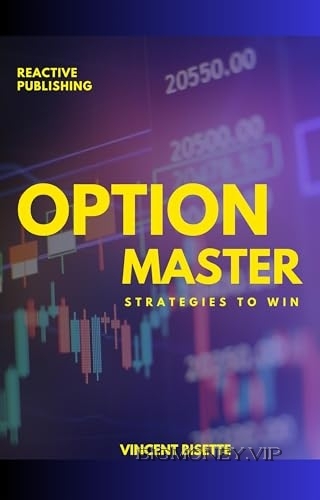Options Master: Strategies to Win by Vincent Bisette

CHAPTER 1:
UNDERSTANDING
OPTIONS AND THE
OPTIONS MARKET
Options are contracts that grant the purchaser the right, but not the
obligation, to buy or sell an underlying asset at a specified price on or
before a certain date. These financial derivatives are classified into two
main types: call options and put options. A call option provides the buyer
the right to purchase the underlying asset, while a put option confers the
right to sell. This fundamental distinction is crucial for traders to master, as
it forms the basis of all options trading strategies.
The options market, much like the vibrant streets of Vancouver, is a bustling
ecosystem of buyers and sellers, each participant moving with their own
intent and strategy. It operates through regulated exchanges—meticulously
organized arenas where options contracts are listed, bought, and sold. This
structured environment ensures transparency and fairness, offering traders a
secure platform to ply their trade.
Central to the options market's function are market makers—entities
committed to maintaining liquidity by being ready to buy or sell options at
publicly quoted prices. By ensuring that there is always a buyer for every
seller (and vice versa), market makers facilitate smooth and efficient market
operations, much like how traffic controllers ensure the orderly flow of
vehicles through busy intersections.
For retail traders—individuals trading their own capital—the options
market presents a compelling avenue for investment and speculation. It
offers the allure of high potential returns, albeit accompanied by significant
risk. Meanwhile, institutional traders—large entities trading significant
volumes of assets—utilize options for a variety of purposes, from hedging
risk across extensive portfolios to speculative bets on market movements.
Understanding the options market requires more than just a grasp of its
terminologies and mechanisms. It involves recognizing the interplay of
diverse market forces, the impact of global events, and the subtle nuances
that can sway market sentiment. It's akin to mastering a complex piece of
music, where each note, no matter how minor it may seem, contributes to
the harmony of the piece.
The options market is a complex yet fascinating world, offering traders a
spectrum of opportunities to hedge, speculate, and leverage their financial
positions. With its unique combination of risk and reward, it attracts a broad
array of participants, each contributing to the market's vibrancy and depth.
As we delve deeper into the intricacies of options trading in the subsequent
sections, remember that a firm understanding of the basics laid out here is
crucial for mastering the art of options trading.
Defining Options: Calls and Puts
Imagine you're eyeing a potential investment in a tech startup based out of
Vancouver, renowned for its innovative prowess but yet to explode onto the
global scene. Buying a call option in this context means securing the right
to purchase shares in this startup at today's price, betting on the company's
future success. If the startup's value soars, your call option allows you to
buy shares at a price far lower than the market rate, reaping significant
profits from your initial foresight.
At its essence, a call option is a contract that grants the holder the right (but
not the obligation) to buy an underlying asset at a predetermined price (the
strike price) within a specified period. The allure of a call option lies in its
leverage potential: it enables traders to control a substantial amount of the




